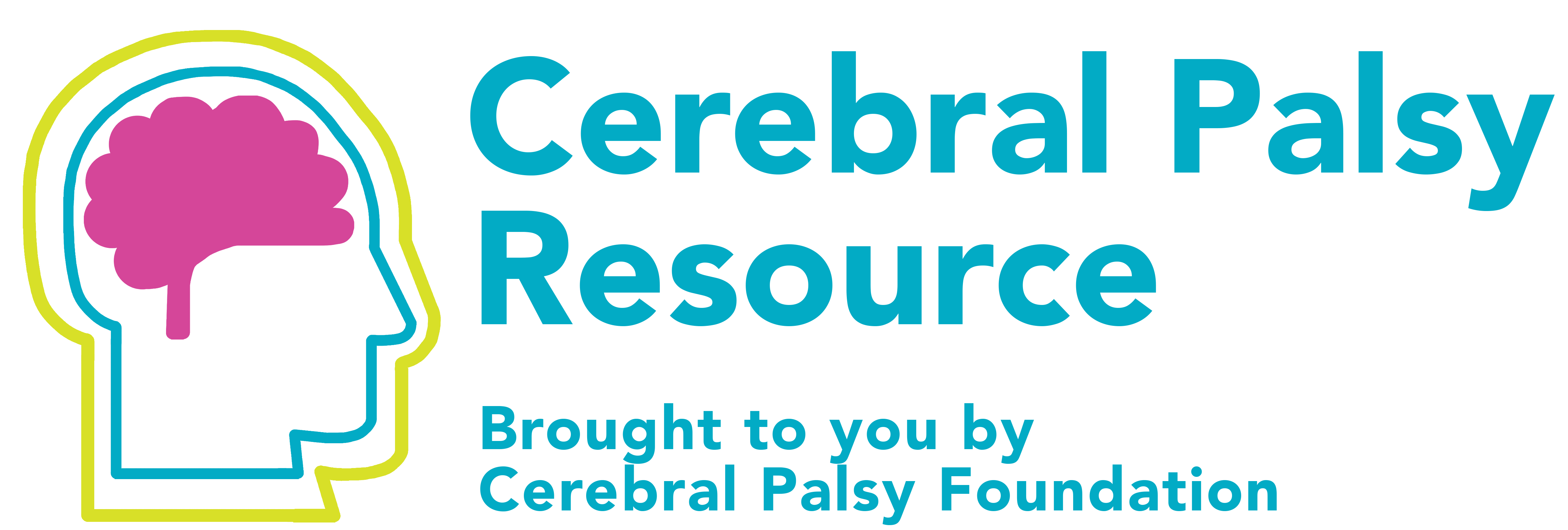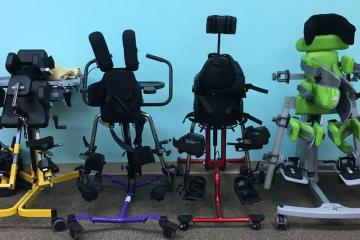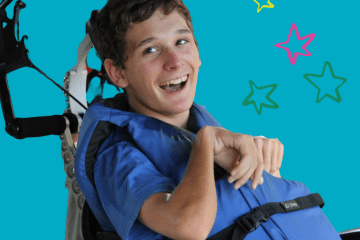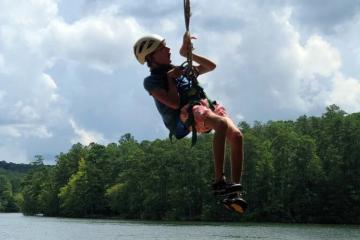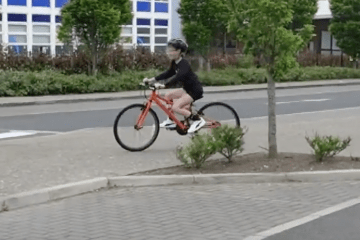Movers, Shakers, and Troublemakers: How Technology can Enhance Mobility and Access for Children with Disabilities
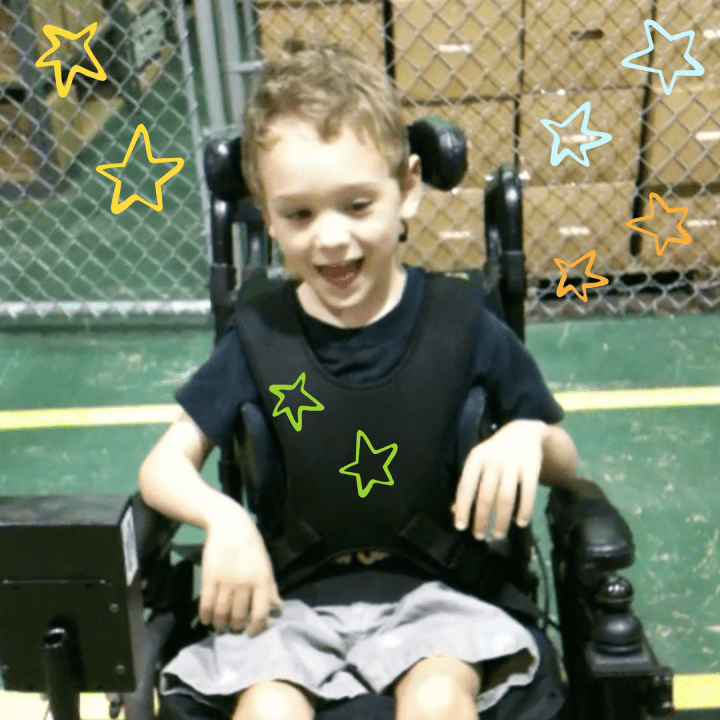
A BRIEF OVERVIEW
• Mobility (the ability to move around) is important for interacting with the world, developing social relationships, and participating in our community
• Ableism is when people are treated unfairly because of their body or mind differences. This can make people feel ashamed. It can also make it hard for them to move around because places aren’t accessible. This means they have fewer chances to be mobile.
• Studies show that when kids with disabilities have self-initiated mobility (can start moving on their own), it helps them grow, make friends, and take part in things. This is true no matter how they move around.
• Many young children with disabilities lack access to mobility technologies such as wheelchairs or supportive walking devices
• It is important to spread the word about the benefits of mobility technology, and some of the current barriers that limit access to mobility technologies for children with disabilities
• We need to tell people about how mobility technology can help kids with disabilities. We need to talk about why it can be hard for families to get this technology and work on making it easier to access these tools.
• There are many ways for families to try mobility devices for children. They can work with their therapy teams to access the technology they need.
Connecting to the World through Mobility
I want to invite you to take 30 seconds and think back to when you were a kid. What did you love to do? Why did you love it? How did this contribute to who you were, and how see yourself now? For me, it was playing the 80’s childhood game ‘ghosts in the graveyard’ around my neighborhood in the summer. Ghosts in the graveyard combines tag and hide-and-seek…in the dark. What could go wrong?! I was with my friends, people I trusted. I was in my own yard, and the yards of my neighborhood. Places I knew well. Sure, there was a bit of risk, or what we thought to be risk in our young minds, but I loved to do it. I felt free and safe at the same time.
So, what did you think of? Maybe for some of you, it was reading. For others, playing with friends at a playground, or in the sand and water at the beach. Maybe you were a dancer, or an artist. Perhaps you were on a sports team of some sort. Maybe it was none of these things. And regardless of how or where, I imagine we all got into some troublemaking. So, what made it all possible? I would guess that whatever it was, it was possible because of your ability to connect to the world, and objects, and people through mobility.
Ableism, Troublemaking, and the Importance of Mobility
Though we may have our own special idea of what mobility means, there’s also likely a lot of common ground, too. Let's start with how the dictionary defines mobility and locomotion. According to Merriam-Webster, locomotion is defined as ‘the act or power of moving from place to place’. For mobility, we find ‘the ability or capacity to move; the ability to change one’s social or socioeconomic position in a community and especially to improve it.’ What stands out to you when you see these definitions? What is or isn’t included?
Note the definitions don't talk about how people move or who's moving. But what they do highlight is that mobility is powerful and social. We know society values some types of movement, like walking, more than others. For those with disabilities, this value judgement can lead to harm. This is ableism at work. It is thinking that being normal means being able-bodied. Ableism leads to unfair treatment of those who function differently. This connects to other 'isms' and makes things even harder. Even though there are tools like wheelchairs, walkers, scooters, and gait trainers to help with mobility, ableism affects how we see and value this technology in society. Because of this, people with disabilities wait longer for access, pay more, and have fewer choices. Just exploring these options can cause people to feel shame. Even then, many places are still inaccessible. Our mobility isn't just about getting from one place to another. It helps us connect with others, make friends, explore new things, and have fun. When the mobility of disabled people is limited, it is an equity issue. For children with disabilities, ableism can take away their chance to be troublemakers.
Parents know that toddlers can be a handful. They touch everything, make messes, and often try to run away. But what if a toddler has a physical disability? How can we help them learn about their bodies and the world around them, especially when they might need help or special equipment to move around? Research shows that when kids start moving on their own, they learn a lot. They get better at understanding space, thinking, talking, and moving. Their relationships with parents and caregivers also improve. They show more emotions and hear more language from adults. These benefits happen for all kids, whether they crawl, use a baby walker, or drive a mobility device.
When kids can’t move on their own, either by using their muscles or with technology, they may have trouble starting to play and interacting with others. They may also have slower development in thinking, seeing shapes, and body awareness. Caregivers may not notice when the child tries to move or talk. Kids with disabilities are often described as quieter and better behaved than other kids. They are often placed near the fun but are not always part of the fun. This is not the child’s fault. It’s because our surroundings, technology, and ways of doing things don’t reflect how important it is for very young children with disabilities to move on their own. Parents and disabilities rights groups have worked hard to make schools more inclusive. But we need to do more to see how technology and design can help kids move and truly take part in things. As a pediatric physical therapist for kids and a technology researcher, my goal is to help kids with disabilities have more chances to be movers, shakers, and troublemakers.
Spreading the Word about the Importance of Self-Initiated Mobility
I work at the University of Washington as a researcher and associate director of an accessibility center called CREATE- The Center for Research and Education on Accessible Technology and Experiences. Our center has researchers from many different fields. We all focus on accessibility in different ways. My focus is on helping kids with disabilities access mobility technology. Our team works with children ages 1-5 who have trouble moving because of conditions like cerebral palsy, Down syndrome, spina bifida, muscular dystrophy, spinal muscle atrophy, and genetic conditions. Some kids will learn to walk. But it’s important for them to have other ways to move around while they practice. Sometimes people think using mobility technology keeps children from developing motor skills like walking. This isn’t true. Research shows that using technology can even help kids learn to walk and do other things better! Our work at CREATE is to learn more about how kids use technology to move and to explore new technology together with the disabled community. We want to share how mobility technology helps kids grow and interact with their world.
Trying Out or Obtaining Mobility Technology
We know that experiencing self-initiated mobility is important, and mobility technology can help facilitate these experiences for children with disabilities. How can families trial or start the process of obtaining mobility technology? Here are some important considerations:
• Talk with your therapy team to see if they have any trial devices at the clinic for short-term trial or longer-term loan.
• If there are no trial devices available through your therapy provider, ask to be put in touch with a local durable medical equipment supplier such as NuMotion.
• Regional equipment lending libraries may or may not have pediatric mobility technology, but it is always worth asking. Many States have assistive technology assistance programs that ship mobility technology accessories (not devices themselves) across the state, and there are many other libraries throughout the country.
• Before purchasing mobility technology, consider device size and weight, transportation needs, home accessibility, and growth trajectory of your child. This is most often done through an equipment clinic at a local hospital or therapy center. These are staffed by experienced rehabilitation professionals and equipment suppliers who assist in finding the best equipment match for your child’s needs as they grow and develop.
• While some mobility technology is purchased out of pocket, most are ordered through public or private funding sources and require a letter of medical justification. This letter must address the match between the needs of your child and the features of the equipment, a cost justification, and a description of home and transportation access to ensure the equipment can be used successfully in the home and community. Staff at equipment clinics typically write this letter and send it to a referring physician for signature before submitting the request to a funding agency.
• The approval process for mobility technology can take from 3-12 months, depending on the funding source. Initial denials and appeals are common, so it is important that you and your equipment clinic team members are strong advocates for your child and their mobility needs.
• Do-It-Yourself adapted mobility technology solutions are also available through the Go Baby Go! program. An international mobility and socialization program that provides custom safety and accessibility modifications to off-the-shelf, battery powered ride-on toy cars at no cost to families. Toy cars are adapted with an accessible switch and custom seating supports as a temporary self-initiated mobility solution for young children (9 months-5 years).
Families can learn more about mobility technology by taking part in research. This can help them find out what types of technology are available and get practice using it. For example, at CREATE, we have done studies on how kids with cerebral palsy and Down syndrome move and explore, how young kids learn to use powered mobility devices, and how families use adapted toy cars. Taking part in research is always up to the family. Parents must give permission for their kids to join. Research studies are usually advertised on university websites and at therapy clinics. You can also join a research registry or ask your therapy team for help finding local researchers. Research centers like CREATE partner with people with disabilities and families to find out what research is most important to them.
Being able to move around on your own is a basic human right. It is also really important for kids’ development and social life, no matter how they do it! Mobility technology can help children with disabilities, but it can be hard for families to get. Trying out equipment through therapy providers or lending libraries, buying equipment, or taking part in research can all help your child experience the benefits of mobility technology. These benefits can help your child grow, make friends, and take part in things.
This article was originally written for the PAVE organization and shared by the author with the Cerebral Palsy Foundation.
Sabet, A., Feldner, H., Tucker, J., Logan, S. W., & Galloway, J. C. (2022). ON time mobility: Advocating for mobility equity. Pediatric Physical Therapy, 34(4), 546-550.
Feldner, H. A., Logan, S. W., & Galloway, J. C. (2016). Why the time is right for a radical paradigm shift in early powered mobility: the role of powered mobility technology devices, policy and stakeholders. Disability and Rehabilitation: Assistive Technology, 11(2), 89-102.
https://www.unicef.org/innovation/assistive-products-and-inclusive-supplies
https://osepideasthatwork.org/sites/default/files/at_guide_english.pdf
https://www.ohsu.edu/sites/default/files/2021-10/Wheelchair%20Tips%20for%20Families%202021.pdf
As a pediatric physical therapist and technology researcher, my goal is to contribute more inclusive and equitable opportunities for children with disabilities to be movers, shakers, and troublemakers.
